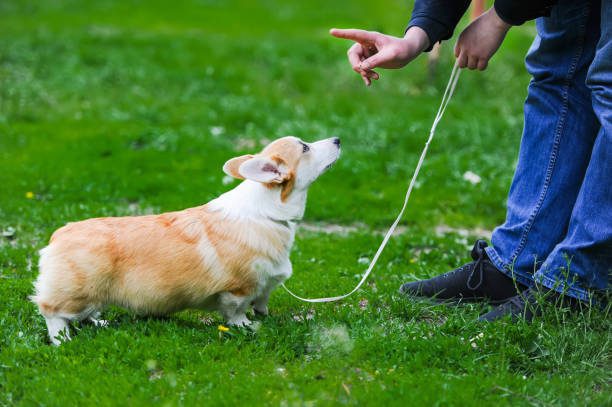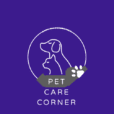Wondering when to start training your puppy? Timing is everything when it comes to shaping a well-behaved, confident dog.

It’s an absolute delight to bring home a wiggly, wide-eyed puppy—until they start using your favorite shoes as chew toys or think the carpet is a toilet. The key to bringing up a polite dog? Don’t wait to begin your training! However, what should you teach puppies first, and when can they start learning? Puppies reach important learning milestones that influence their behavior in the future, from their first shaky steps at 8 weeks to the rebellious teenage stage. If you miss these windows, you may have a difficult time breaking bad habits. The good news? If you know how to guide them, even small pups are eager to learn. From basic commands to socialization must-dos, we’ll break down the essential training phases in this guide for puppy parents. You will learn exactly what to teach and when for a contented, obedient dog, regardless of whether you have a curious 10-week-old fluffball or a mischievous 6-month-old. Let’s maximize their abilities!
8–12 Weeks: Early Socialization & Basic Foundations
The initial weeks of your puppy’s home life are a crucial time for learning. Their brain is like a sponge at this age, absorbing experiences that will mold their behavior and personality for the rest of their lives. This is the ideal time to begin training them—not with rigorous discipline, but with play, positive exposure, and gentle direction—while they are still small and cute.
During this formative phase, pay close attention to the following:
Socialization: The Most Important Aspect
Why it’s important
Puppies go through a delicate socialization period between 8 and 16 weeks, during which time they should have positive interactions with people, animals, and surroundings to help them avoid fear and aggression in the future. Anxiety, reactivity, or trouble adjusting to new circumstances can result from poor socialization. How to do it correctly:
Introduce new sounds and sights, such as children playing, cars, umbrellas, vacuum cleaners, and doorbells.
Meet a variety of people, including men, women, kids, and those with uniforms, glasses, and hats.
Positive handling: To prepare for grooming or veterinary visits, gently touch the mouth, ears, tail, and paws.
Safe puppy playdates: Avoid dog parks and only bring friendly, fully vaccinated dogs.
Varying surfaces: wood floors, tile, grass, and gravel (helps with confidence).
Safety Note: Stay away from high-risk locations like pet shops and public dog parks until your puppy is completely vaccinated, which should be around 16 weeks. For exposure, carry them or use a stroller instead. First Commands & Name Recognition
Objective: Establish the groundwork for obedience by teaching your puppy that their name equates to positive things.
Training Advice: When they look, give them a treat after you say their name cheerfully!
To keep it entertaining, start with incredibly brief sessions (one to two minutes).
First directives to present:
“Sit” is the simplest to learn and aids in impulse control.
“Come” (essential for safety—always give them a big reward when they answer!).
“Leave it” stops them from reaching for potentially harmful objects.
Pro Tip: To encourage them, give them high-value treats like tiny pieces of cheese or chicken! . Teaching Gentle Mouthing to Prevent Bite Inhibition
Why it’s important: Puppies use their mouths to explore the world, and their sharp teeth can hurt. They might unintentionally hurt someone as adults if they don’t learn to control their bite force now.
Training tips: Redirect chewing: Say “Ouch!” in a high-pitched voice when they nip, and then give them a chew toy right away.
Play with other puppies: By receiving feedback from their littermates, puppies naturally learn to control their bites.
Steer clear of punishment: Never hit or yell at them, as this may incite fear or aggression. Introduction to Crates and Potty Training
The objective is to teach your puppy where and when to go by establishing a routine.
Tips for Potty Training:
After eating, playing, waking up, and every one to two hours, take them outside.
Use a cue such as “Go potty” and designate a specific location for using the restroom.
When they go to the proper location, give them praise and treats right away.
Crate Training (for safety & housebreaking):
Make the crate cozy (soft bedding, toys, covered with a blanket).
Start with short periods (5–10 minutes) while you’re home.
Never use the crate as punishment—it should feel like a safe den.
.Avoiding Adverse Conduct Early No Jumping: Reward them only when all of their paws are on the ground; ignore them when they jump up.
Avoid excessive barking by teaching “Quiet” or using a toy as a distraction.
Chewing: Make sure your house is puppy-proof and provide suitable toys (such as frozen teething rings).
Key Takeaways for Weeks 8–12: At this time, socialization is more significant than formal obedience.
Because puppies have a goldfish-like attention span, keep training sessions brief and enjoyable.
Build trust rather than fear by using rewards rather than punishment.
It’s more difficult to break bad habits later, so start good ones now!
You’re preparing your puppy for a lifetime of self-assurance, polite behavior, and a close relationship with you by establishing this foundation. We’ll build on these foundations over the next three to four months!

3–4 Months: Building Obedience & Manners—Shaping a Well-Behaved Puppy
Your puppy is more alert, inquisitive, and prepared to learn structured obedience by the time they are 12 to 16 weeks old. Before adolescence sets in, now is the ideal moment to strengthen manners, enhance impulse control, and stop problematic behaviors.
Your dog is more coordinated and mentally ready for a little longer training sessions at this point, but keep them brief. Consistency is essential because they’re also pushing boundaries!
Making Basic Commands Stronger
Objective: Make sure your puppy obeys even when there are slight distractions and goes beyond basic responses.
“Sit” and “Down” commands to Master: Add duration (wait 5–10 seconds before rewarding). “Stay” (Beginning Level): Begin with only two to three seconds, then progressively extend.
“Leave It” (Advanced): Work on temptations that are more valuable, like food on the ground.
“Drop It”: A necessity for safety (exchange a toy for a treat).
Expert Tip: Don’t overburden your dog with the “3 D’s” of training—distance, duration, and distraction—one at a time.
Leash Training: Avoiding Early Pulling
Why it’s important: If you don’t teach leash manners now, pulling will become a hard-to-break habit.
How to Train It:
Introduce the leash indoors first—let them drag it (supervised) to get used to the feeling. Reward them for walking next to you by keeping them by your side (“heel” position) with treats.
Only proceed when the leash is loose. Stop when they pull. Positive, brief sessions—no more than five minutes—to prevent frustration.
Steer clear of retractable leashes because they promote pulling, and jerking the leash can cause neck pain.
Courteous Salutations (Avoid Leaping!)
Puppies jump out of excitement, but it’s annoying (and risky for young children or the elderly).
The training solution is to turn away and only pay attention when all four paws are on the ground. This will help you ignore jumping.
Instruct guests to “Sit to Greet” by asking them to sit before petting. Reward composure by treating them with courtesy when they approach.
Alone and Crate Training (Avoiding Separation Anxiety)
Goal: To prevent your dog from forming harmful habits, help them feel at ease being by themselves.
How to Do It:
Increase crate time gradually. Start with 10 to 15 minutes at home.
Practice brief departures by going outside for 30 seconds and then coming back quietly.
Make alone time enjoyable by using food puzzles, such as a stuffed Kong.
Red Flag: Wait for a quiet moment before letting your puppy out if they are whining. Preparing for Handling and Grooming Getting your dog accustomed to handling now makes baths, nail trims, and veterinarian visits MUCH easier.
Practice every day by touching your paws (for future nail trims).
Examine the mouth and ears (helps with veterinary exams).
Gently brush; even breeds with short hair must be able to handle being groomed. Start brushing your teeth (use toothpaste that is safe for puppies).
Make it Positive: To help them associate handling with positive things, pair it with treats!6. Preventing Common Problem Behaviors: Reward silence following a bark to teach “Quiet.”
Keeping food out of reach and rewarding “Leave it” is known as counter surfing.
Chewing Furniture: Always reroute to authorized chew toys.
Key Takeaways for the next three to four months: Pay close attention to impulse control; “Leave It,” “Stay,” and walking on a loose leash are essential.
Brief but frequent sessions (two to three times a day, 5 to 10 minutes).
Socialization continues! Continue giving them new experiences. Avoid bad habits now, as they will be more difficult to break later!
The following four to six months will be spent handling distractions and proofing commands.

4–6 Months: Strengthening Commands & Distraction Training
4-6 Months: Increasing Distraction & Commands Proofing behaviors around distractions is the main training goal.
Crucial Instruction:
Reliable recall (“Come”): Practice in enclosed, secure spaces.
Walking on a loose leash can deter pulling.
Training in a cage and by yourself can help avoid separation anxiety.
6–12 Months: Advanced Training & Adolescence Challenges
Focus: As puppies (like human teenagers) test boundaries, consistency is key.
Crucial Instruction:
Advanced commands include “Heel,” “Wait,” and maneuvers like “Roll over.”
training without a leash (if in a safe area).
Impulse control: “Stay” by using diversions.
ongoing socialization with new people, dogs, and surroundings.
Training Advice for Success:
Because puppies have short attention spans, keep sessions brief (5–10 minutes).
Never punish; instead, use positive reinforcement (play, praise, and treats). Repetition is key; be patient and consistent.
Socialize safely: Stay away from unvaccinated dogs and places until you’re completely vaccinated.
You will raise a well-mannered, self-assured adult dog if you begin early and work your way up.

